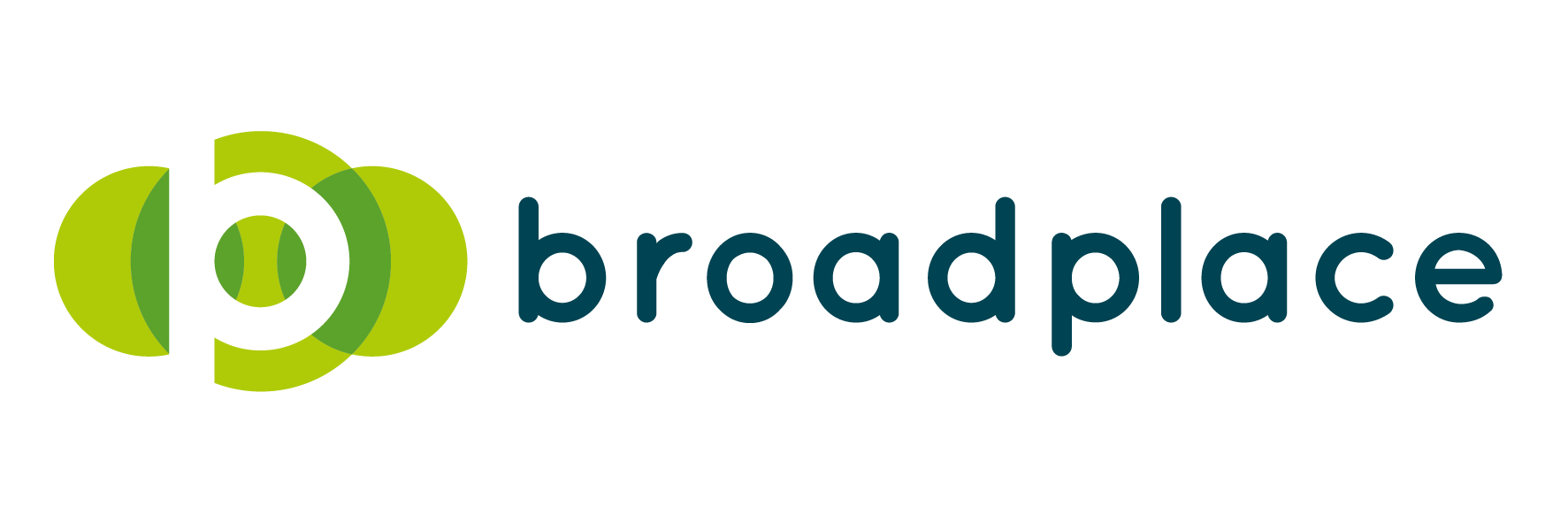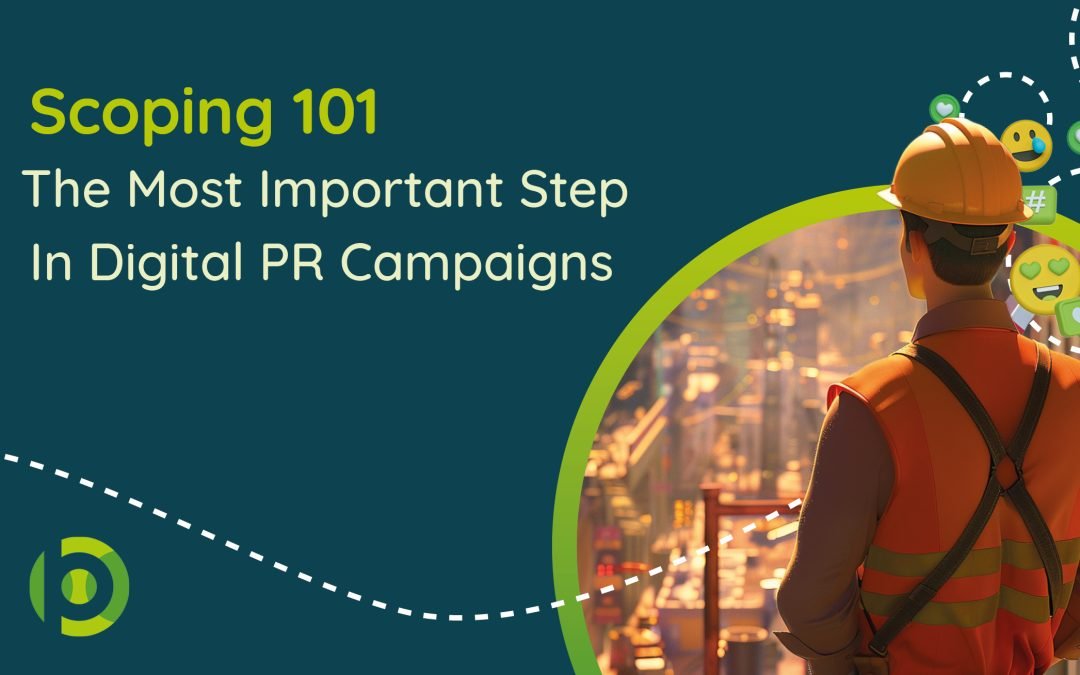So, you’ve had a brainstorm and you’re ready to pitch your creations to start earning coverage. WRONG!
It’s a mistake many digital PR professionals make, particularly in the early stages of their career. Jumping from idea to pitch to production in little time at all, not stopping to consider where the content in your campaign will come from and whether it will actually work. Then we sit and wonder why a campaign has no links to its name.
Doing your due diligence and scoping out your ideas between brainstorm and pitch is the most vital step of the entire campaign creation process, providing you with the building blocks to create a campaign, as well as all the information you need to pitch effectively. But what exactly does the step involve?
At Broadplace, the scoping process considers a wealth of information to ensure that every digital PR idea we pitch to our clients is in the best possible place to drive results in the media space. If we’re happy to pitch ideas, then we’re confident they will do well. It’s as simple as that.
So how do we get into that position?
For anybody keen to improve the quality and competency of their digital PR ideas prior to pitching your ideas, here are the key things to stretch test them with…
Step 1: Has it been done before? How can you do it better?
The first question to ask is has it been done before? This can give you an awful lot of insight into how feasible your idea is before it gets pitched. There are a couple of key things you need to look at here.
When was it last done?
Just because it’s been done before doesn’t mean it can’t be done again. But if it’s been done recently, then the likelihood is that you’re going to get very limited pick-up from it as it’s not fresh, timely or very original.
When assessing whether it’s worth doing a campaign that’s been done before, there’s a couple of rough rules that we’d typically follow:
- If it’s been done in the last 12 months then it’s a no-go
- If it’s a campaign that a brand repeats every year, then it’s a no-go
- If there isn’t anything that is going to make it timely or feel relevant, then it’s a no-go
How has pickup been for similar campaigns?
If you’ve seen a campaign that is similar to yours that’s already been done, you need to get an understanding of how well it has previously performed.
If it’s performed really well and it passes the “when was it last done check” then it pretty much validates your idea.
If it bombed and generated little to no links then you need to dig into it in a bit more detail to understand why and ask yourself why is our going to perform any better.
How can you do it better?
We don’t want to just be doing the same old thing, so that poses the question, how could you do it better? Analyse the campaigns that have been produced previously and weigh up the pros and cons of it.
Ask yourself:
- What has been executed well with the data and its visualisation?
- Are there certain angles that have seen ample pick-up in the media?
- How is the timeliness of the campaign? Are there other dates that could work better?
Then you should consider how it could be improved upon:
- Is the data strong enough?
- Are there aspects of the story missing that you could fill?
- Is there an angle that’s been glaringly missed that could tell a more interesting story?
By answering these questions you can get a much clearer picture as to whether your idea has the legs and originality to succeed.
What if it hasn’t been done before?
It may be that you’ve stumbled across an idea that’s never been done before. So, what does that mean? Just because you’ve not got anything to validate your idea with, that doesn’t necessarily mean you shouldn’t push on with it. You may have uncovered a gem of an idea. It may also be that it’s just not feasible to do. And it’s your job to figure out which it is.
The process for scoping a digital PR campaign that hasn’t been done before is a little different form one that has. You’re relying on audience research to validate it. So where you can use tools like Google trends to see if the searches around it are trending, take to forums to see if people are discussing topics related to it and get your hands on any customer data you can that backs it up.
Step 2: Can you get the data for it?
Most ideas that don’t get passed through a scoping process are down to either having been done before or not having the data available to tell your story. So before you go ahead and pitch the campaign you need to check:
The availability of data
One of the key reasons to scope out ideas before pitching is to determine how available the data is. Far too many digital PR professionals pitch ideas without finding out whether they can get the information they need. Those ideas get passed and then you’re a little bit stuck.
Scoping your ideas out makes life so much easier. You can identify where you get the data from before you even start the research phase while also allowing you to be much more detailed and well-informed at the pitch stage.
When exploring the availability of data, think about the angles you want to get from the campaign and what type of data that requires. There are hundreds of data sources out there to aid and inspire digital PR campaigns, while you may also want to consider commissioning surveys, scraping social data or analysing sentiment or utilising your own internal data.
How authoritative is that data?
While it’s all good sourcing the data, an important aspect is also to determine how authoritative it is. As you might expect, a Gov.UK dataset is much more trustworthy than DavesTrafficNews.com in the eyes of a journalist. You need to build your campaign on data that is trusted and rigid.
Alongside this, look at when the data was last released. You want your data to be as fresh as possible. If you’re looking at a yearly data set, but that data is nine months old, then really that is out of date. That isn’t to say you can’t use it for comparative purposes, but the likelihood is an updated data set will be released in three months’ time and be much better placed to tell your story.
If you’re commissioning a survey, the field and its size is also important. If you want to survey the general public, you want as even a data set as possible across region, age and gender. Typically, a survey of 1,000-2,000+ respondents is considered robust enough to go to press, while that number can be 500+ for more niche studies, such as if you wished to survey people working in the financial sector or healthcare.
Can you use multiple data sources?
A good way to differentiate your campaign and angles from other similar campaigns that may have been produced previously is to tie in multiple data sources. Think about other data sources that could complement your campaign and create new angles and identify different trends.
It might be using previous years from the same data set, it could be using two data sets that somehow relate and allow you to note correlations.
Step 3: Can you draft in experts to add further authority to your campaign?
Comments and insight from experts can further enhance your story by giving it more of a “why” and “what”.
When you’re scoping a digital PR campaign, think about what individuals or organisations could add value, expertise and authority to your campaign. This could be a charity, a university, a person in government, healthcare, law, or any other area.
Additional commentary can create further angles, differentiate your campaign from others that have been released previously and provide you with a figure who can aid outreach with further commentary or answer any questions.
Step 4: What does your campaign look like?
The scoping stage of a campaign is a chance to not only find your data sources and gather a sense of what your key angles may be, but also help determine how you’re going to approach it visually.
Explore what other campaigns with related stories have done visually and analyse the the pros and cons of them. Other similar data sets can be useful to analyse, too. For example, if you’re looking at a regional set of data percentages, it doesn’t matter if your data is representing apples, oranges, jigsaw puzzles or car insurance claims. It’s more about how it visually suits a specific audience and tone of your story.
It may be at this stage you bring the person designing the campaign into the equation, discussing what story you want to tell is and using their expertise to almost map out how that is told. Again, this can be incredibly useful for selling your idea in, allowing you to potentially even create mock-ups, mood boards or wireframes.
At this stage, you’ll also find any limitations, which is useful before you go and sell the world to a client too!
Step 5: And does it relate to your brand and target audience?
Finally, do make sure it’s relevant to your brand. The goal of any digital PR campaign is to earn links, engagement and awareness of your brand. It’s a chance to showcase your expertise and gain a share of voice in the space.
It may sound obvious, but consider a checklist in which you can answer the following:
- How is it related to your business?
- Are there certain areas of the business that are particularly relevant?
- Is this in line with your overall SEO/marketing strategy and goals?
- Is the idea something that appeals to your audience/customer and the publications they read?
It’s likely that to have got to the scoping stage in the first place, you have will have already answered those questions, but prior to pitching, it’s something to reassess and double down on to make sure it is the right campaign and idea to move forward with.
Step 6: Ready to Pitch?
By completing a scoping process, you’ll get a clear idea of the campaign ideas that are best positioned to work for you and your brand. It may be that more hit the cutting room floor than don’t, but that’s the purpose of the process. It’s much better to drop an idea here than potentially spending thousands of pounds on a campaign that was never likely to work in the first place.
The beauty of the scoping ideas is that not only are you doing your due diligence, but in the process, you’re picking up all the details you need to make the pitching process much smoother and well-informed, as well as speeding up research as you know exactly what you need and where to get it!
So, remember:
- Make sure it relates to your brand and audience/customer
- Check whether it’s been done before. If so, how can you do it better?
- Ensure the data is available, accurate and from a trusted source
- Explore how you can add further authority and expertise
- And think about how your going to visualise the end results
Do that, and you’ll be researching your next campaign before you know it…

